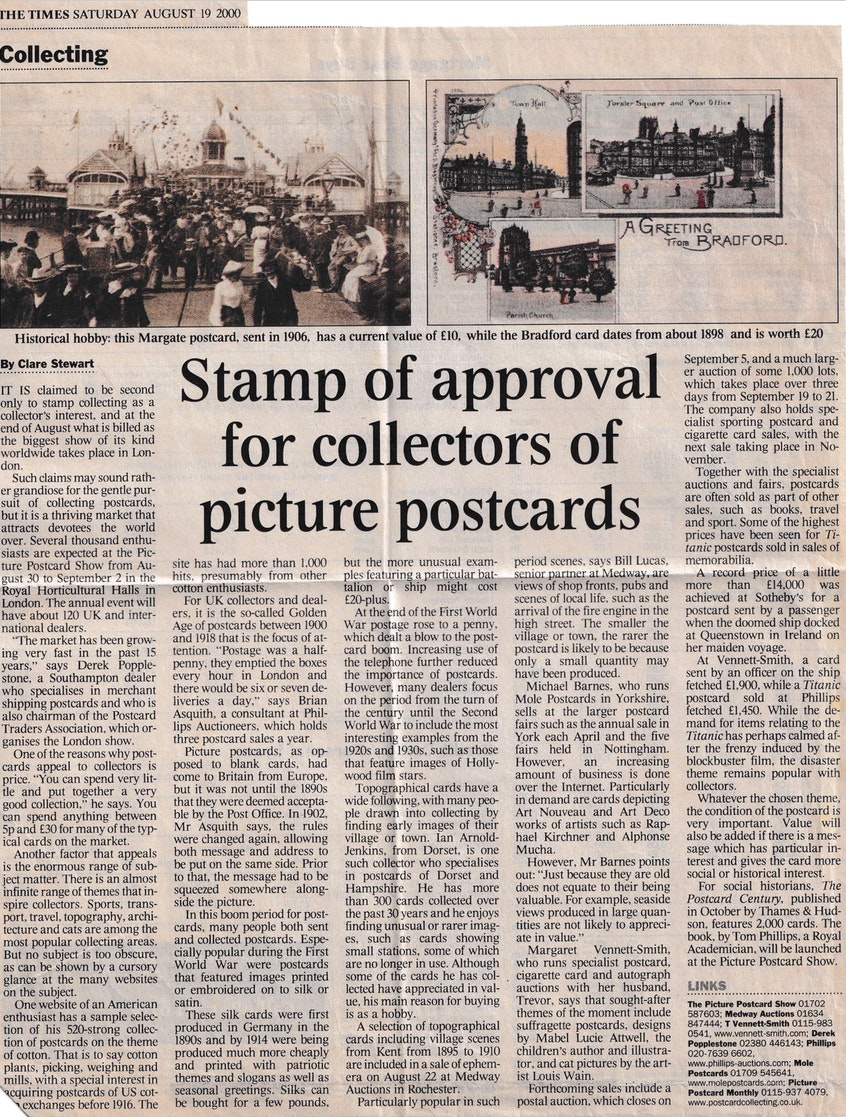The Formation of the Bob Jordan Collection (BJC)
Bob lived all his life in Yate, except the few years in the early 1950s when he was in the army. Bob's interest in postcards was stimulated early on by visits to the shop and studio of local photographer extraordinaire, Murray Dowding who from 1895 took thousands of photographs around Yate and the Sodburys capturing not only local landscapes and landmarks but also the social fabric of the community and sold them as postcards.
Bob's passion for collecting and preserving things for future generations to appreciate started however through collecting cigarettes cards from empty cigarette packets as a boy. As he got older this turned into a serious hobby with Bob sporting a fine collection of cigarette sets ranging from cricket and film starts of the 30's and 40's through to beautiful sets of nature cards such as British birds and butterflies. These sets were obtained by regular visits to collector's fairs in Bristol and other nearby cities that travelled the country trading different cards.
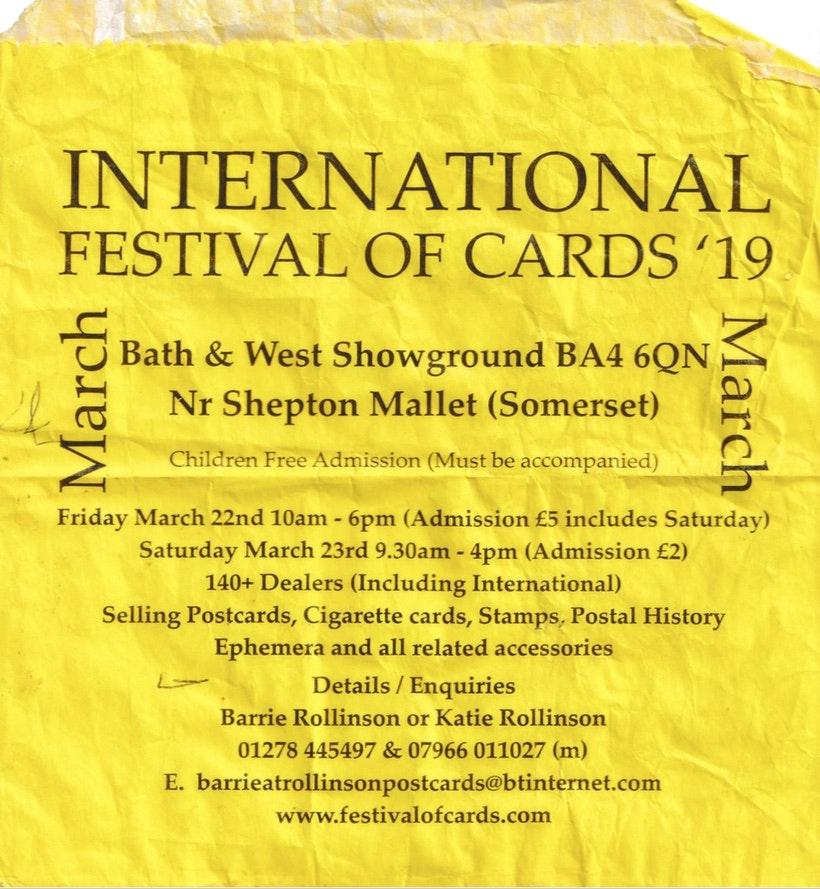
It was at these fairs that Bob got exposed again to postcards and especially to those of Yate and Sodbury and those of the local areas where he regularly worked and travelled and played sport especially for local village cricket teams. Bob started buying these local cards and the traders would look out and keep cards for Bob and overtime Bob started attending Postcard specific fairs too and became a member of the Bristol Postcard Club.
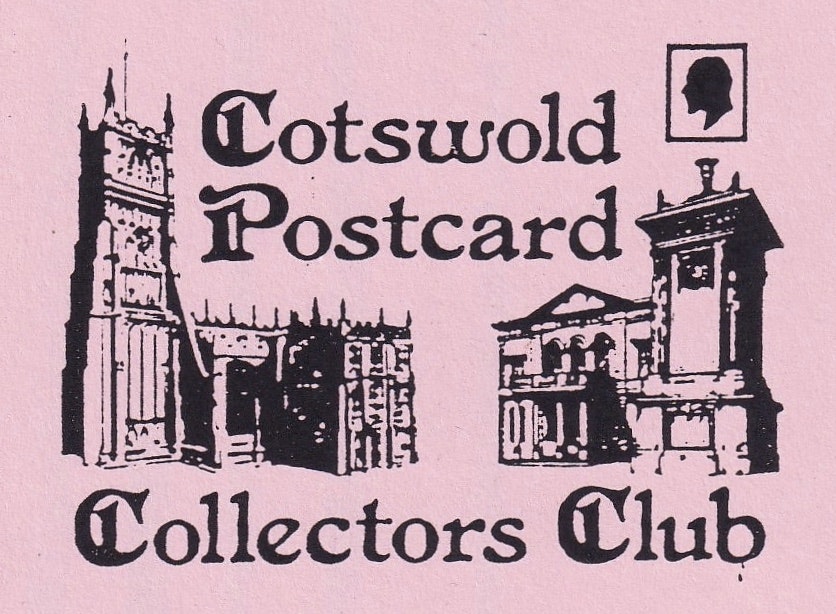
During these collectors fairs, Bob met Howard Beard of Stroud, a cotswold town just 20 miles north of Yate, who runs the Cotswold Postcard Collectors Club based out of Stroud in Gloucestershire that have monthly meetings in the form of talks and excursions. These club meetings, regular buying visits to card collector fairs and Bob's role as a volunteer expert at Yate Heritage Centre and as Publicity Officer for the Yate District Oral History Project drove the development of Bob's collection and contributed to events and materials published by these initiative's in Yate such as exhibitions and books that featured Bob's historic postcards.
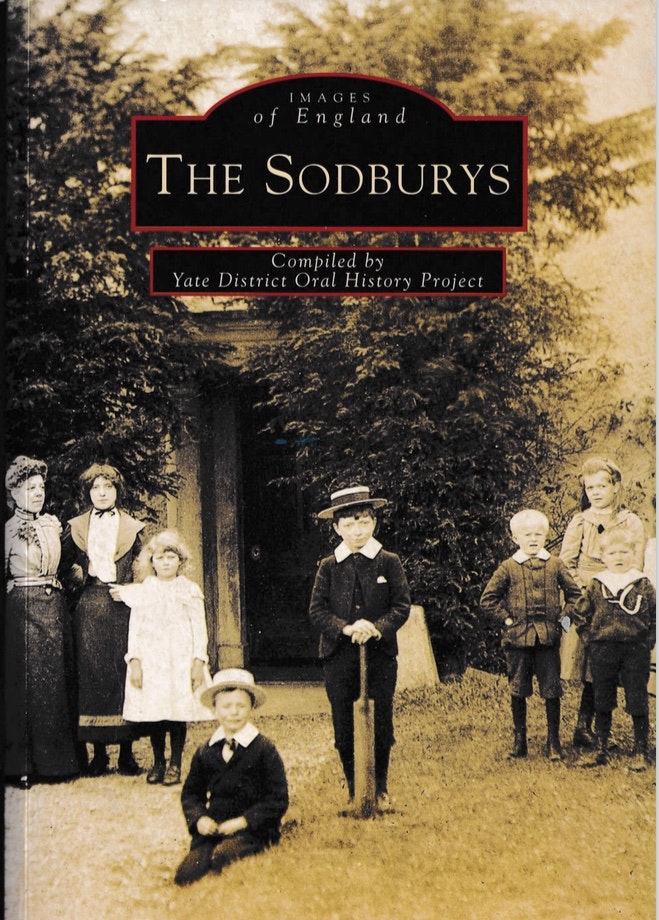
The Yate District Oral History Project published several books which drew heavily on Bob's postcard collections; "Yate" published in 1998 and "The Sodburys" (above) published in 1999 in the Project's - "Images of England Series".
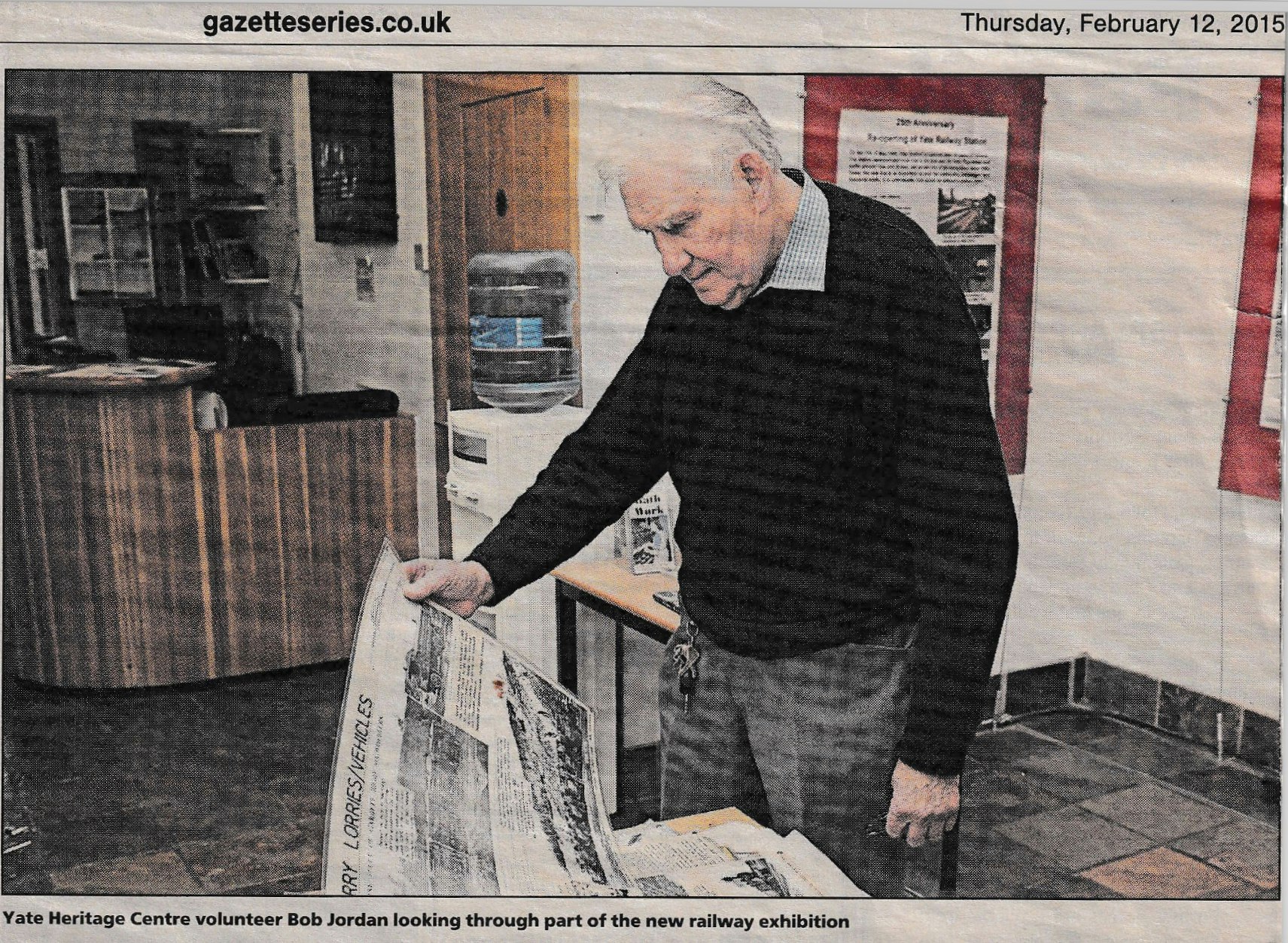
Bob's contribution to the local community and to recording and sharing local history was recognised by the Gazette newspaper in the article above.
Categories & Geographic Scope of the Online Collection
The depth that the collection goes into the fabric of life in Yate is incredible. It includes postcards of local football teams, school classes, workmen, choirs, miners, women clubs, farmhouses, manor houses and so on, perhaps just about everyone that lived or worked in Yate during those years was captured on a postcard!
The core of the online Bob Jordan Collection are postcards of Yate categorised by community ('people', 'sports', 'activities', 'schools', 'events', and 'the war years'), buildings ('street scenes', 'churches, chapels & rectories', 'community buildings', 'courts, manors & houses', 'stately homes & estates', 'farm houses'), and Industry & Transport ('vehicles', 'railways', 'manufacturing' and 'agriculture, quarrying' & mining).
Each of the above categories starts with postcards of Yate which are then followed by postcards of the Sodbury's (Chipping Sodbury, Little Sodbury and Old Sodbury) and then of the hamlets, villages and towns immediately around the periphery of Yate and the Sodburys namely; Mayshill, Nibley, Engine Common, Rangeworthy, Yate Rocks, Wickwar, Horton, Hawkesbury, Badminton, Acton Turville, Tormarton, Dodington, Codrington, Westerleigh and Wapley, Coalpit Heath and Frampton Cotterell.
These are the places Bob would have worked and socialised on a daily basis for decades. For instance he played cricket for the villages of Rangeworthy, Tormarton, Badminton and Westerleigh, every Sunday afternoon throughout the summer, over a period 30 plus year period. Postcards of the countryside of Yate and the Sodburys, and the hamlets, villages and towns that adjoin them, are featured in the category entitled 'environs' (Countryside of Yate and the Sodburys).
Bob would also travel to these villages and beyond each day for the Midland Electricity Board (M.E.B.) who he worked for over 46 years since he started his apprenticeship as an electrician at the age of 15 in 1949. Bob was based at their depot in Chipping Sodbury from which the whole County of Gloucestershire was served.
Yate is also close to the counties of Bristol, Somerset and Wiltshire and sits in the foothills of the internationally renowned Cotswold Hills, an Area of Outstanding Natural Beauty, which after the Lake District and Yorkshire Dales, is the third largest protected landscape in England. The category entitled 'environs' ('Surrounding Cotswold Towns & Villages', and 'Gloucestershire, Wiltshire, Somerset & Bristol') covers these areas. Those postcards of Gloucestershire, that fall within the Cotswold Hills however, are included in the 'Surrounding Cotswold Towns & Villages' gallery rather than the 'Gloucestershire, Wiltshire, Somerset & Bristol' gallery.
The Postcards
The use of 'Picture Postcards' was first sanctioned by the British Postal Authorities on 1st September 1894. Prior to this date - pre-printed plain cards were in use which are commonly referred to as 'Postal Stationery' - none of these are in the collection. The adopted standard sized card of 5½ x 3½ inches which was in common use from 1900 until the 1960's make up over 99% of Bob's postcard collection. The postcards are just about all feature British subject matter and almost all are posted within the UK. Some cards while sold in the UK were printed overseas, especially in Germany.
A few postcards in the collection are from the very late 1800s and some are in the 1950s and '60s. The vast majority of the postcards however date from the first three decades or so of the 1900s which could be perhaps referred to as the heyday of the postcard. Today sending postcards is rare but back then it was the equivalent to sending a text message or email today in a time well before most people had access to a telephone let alone a mobile one or a personal computer. They were an affordable and convenient alternative to sending a telegram and a less fussy and possibly cheaper option than writing and posting a letter. In general the cards were sent to inform someone that they were coming to visit them and that they would arrive on such and such a train or to thank someone for a parcel or gift.
The heyday of the postcard coincided also with a time when most people didn't have a camera and postcards not only captured local landmarks but also the social fabric of a town or village. Many during this period are of village football teams or of school classes or markets or events and hence very personal and might be one of the few occasions that some people were ever captured on film let alone having those images shared publicly like Facebook today.
The heyday of the postcard also coincided with the heyday of the British railway network and the nation's postal system when more train services ran to more corners of the nation than ever before or since. The speed, frequency and geographic coverage of the railways and the almost 24/7 sorting and delivery of post enabled cards to be sent and delivered on the same day - for instance someone in London might inform someone in Yate via postcard that they would be arriving at such and such a time later that day. As telephones and cameras became more widespread and accessible and the frequency of train and postal services reduced to levels more associated with those of today, the role of the postcard started to decline and became less functional and more associated with tourism.
Approximately half of the cards in the collection have a stamp attached and were posted and the vast majority of the rest are blank and never used nor posted. Some have notes, or dates or names on the back of the people featured on the front of the card or the date the place was visited or the card was purchased but these are in the minority.
Dating a postcard is not that straightforward. What is meant by the date? Is it the date the scene on the front of the card was captured by the camera, or is it the date it was published or is it the date that the card was written or posted? There are plenty of examples of cards in the collection that were written on one date and posted on another just as there are examples of the same photograph being printed on different postcards decades apart often by different publishers.
And what is even meant by the date it was posted? The date on the postmark is the date that the card was received in the sorting office and therefore depends on how long the card sat in the postbox or mailbag before formally entering the mail system. Each postcard in this online version of the collection that has some kind of date(s) on it, whether as part of the actual card or added by the sender or in the form of a fully or partially readable postmark, is included in the caption under each image.
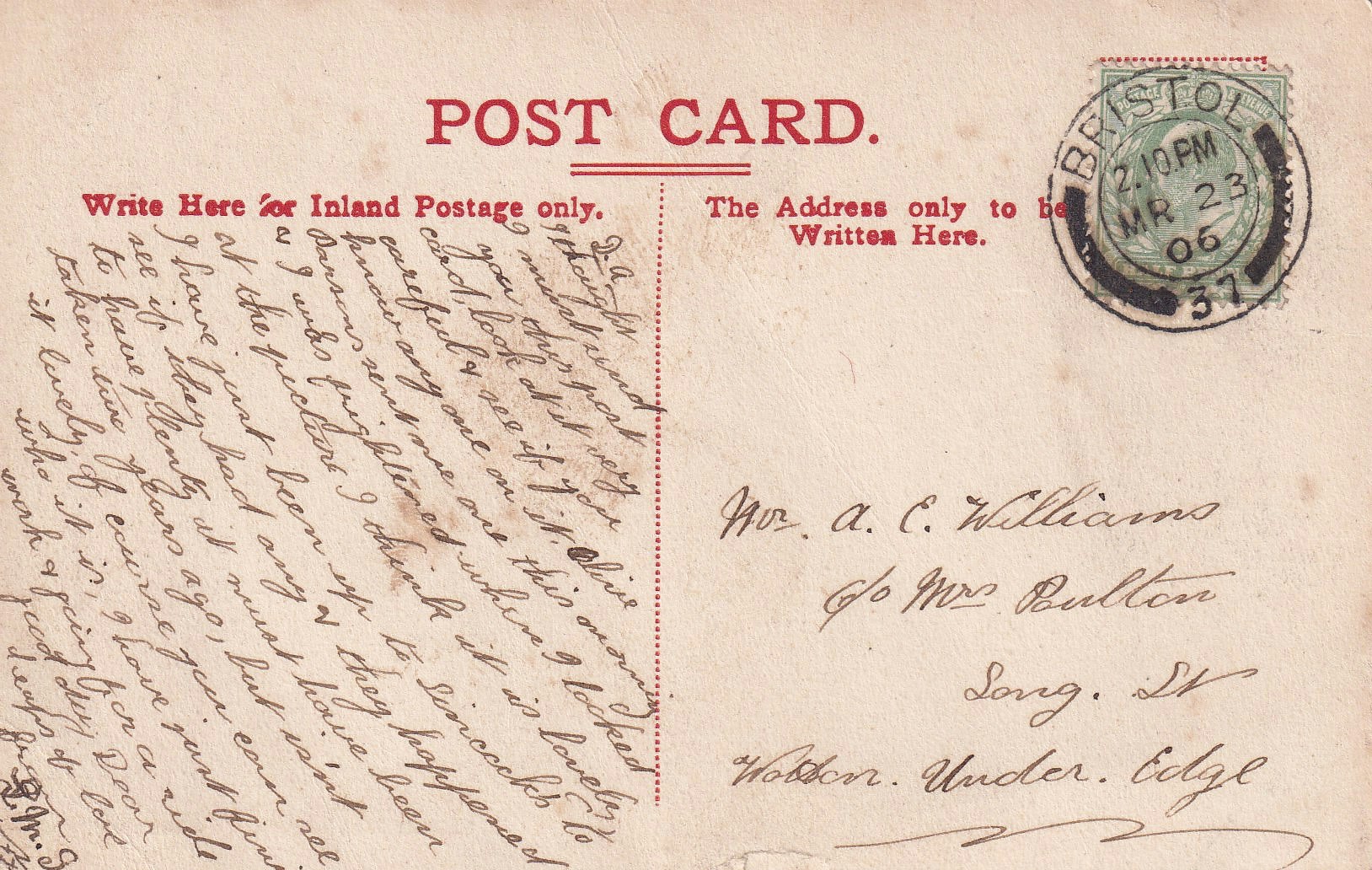
The flip side or reverse of the postcards are only included where they are of particular interest, for instance if the handwriting is particularly attractive or if the message is interesting or sweet. Where the flip side is included it always follows the front image and is indicated as being 2 of 2 (2/2) and the image of the front of the postcard as 1 of 1 (1/1). Bob was not particularly interested in stamps so selecting the flip side of a card for inclusion in this collection was never influenced by the stamp. The messages on the cards themselves reveal that many people collected postcards.
A useful guide for the approximate dating of postcards and or when they were posted based the value of the stamp and the King or Queen on the stamp can be found here.
A small percentage of the images in the collection are not of postcards but of photographs that Bob has in his collection, either originals or copies of originals. Such images are indicated as being photographs in the description below each image. These photographs are included due to their value to the topic matter and to enhance the record of local history. Bob's love of his town meant that he was happy to have in his collection any visual record of Yate in whatever form it was available. Bob considered a poor quality image better than no image at all.
In addition Bob has in his collection various local mementos such as receipts from shops, tickets for local events and cinemas, menus, sports day programmes, advertisements and so on. Some of these have been uploaded to the most relevant sections of the website to help bring the cards to life.
It should be noted that the online version of the Bob Jordan Collection doesn't include every postcard Bob has in his physical collection. It does include however the majority of cards that he has of Yate and Sodbury but only a fraction of those which he has of the surrounding environs.
Photographers, Publishers and Printers of the Postcards
The majority of the postcards in the collection also have the name of the person / company that took the photograph and or produced the postcard on the postcard. Sometimes the photographer, publisher and printer were the same. Sometimes they were even printed in Germany! Some of the companies behind the production of postcards were nationwide in scope such as F. Firth who are still going today - at least in utilising their photographic library to produce prints of yesteryear in various formats and products for today's customers via the internet. A small but not insignificant percentage of the collection is made up of postcards produced by F. Firth. The photographer / publisher is always credited where possible in brackets in the description below each image in this online collection.
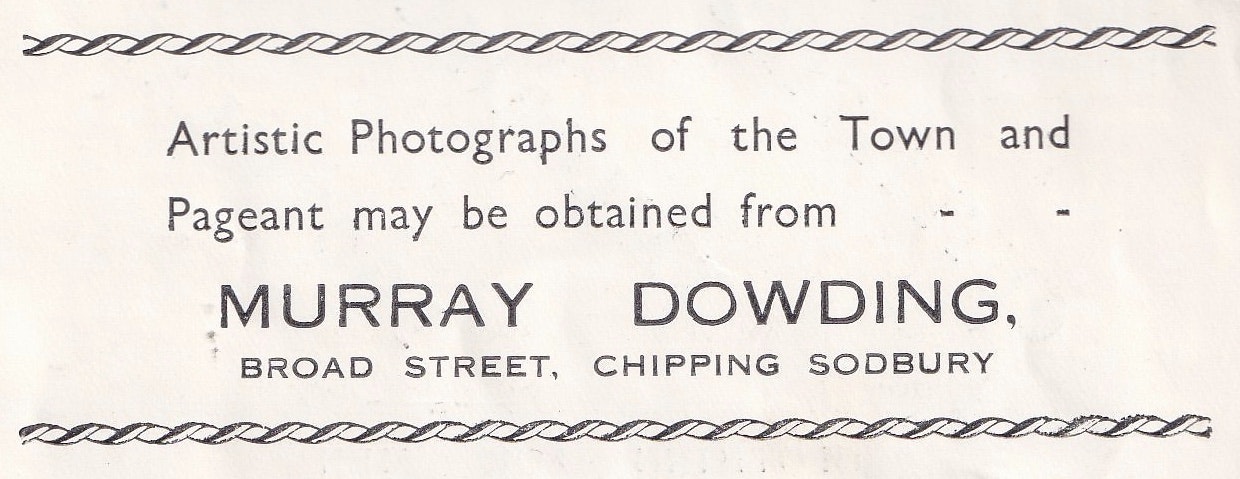
Advert above from the Chipping Sodbury Historical Pageant Programme held on the 18th-20th July 1935 at Downleaze (Produced by Cicely Bedford).
In terms of the BJC the biggest and most important producer of postcards in the collection, from a social and historical perspective, is however Murray Dowding (MD). Probably a good third or more of the featured postcards on this website are by MD.
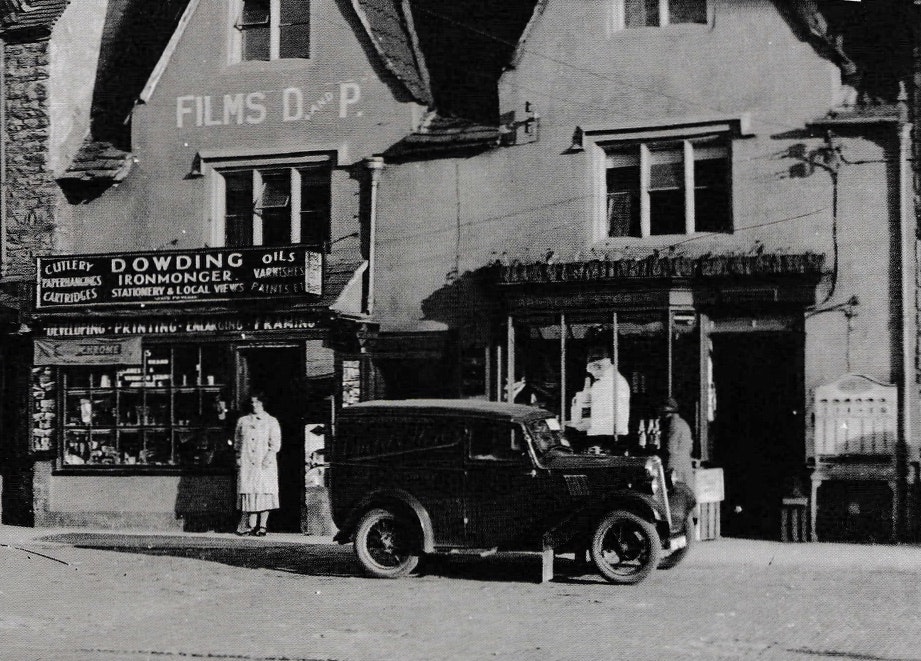
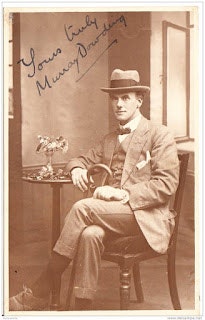
Murray Dowding (above) was a talented photographer born in Chipping Sodbury in 1881 who from 1895 took thousands of photographs around Yate and the Sodburys and produced postcards from them. He ran his family's ironmongery shop in Chipping Sodbury where he would also develop and print negatives for customers as well as publish and sell postcards - this is where Bob used to visit and talk to him as a boy.

The depth and scope of the subjects featured on his postcards was quite staggering and is a valuable record of life in Yate and the Sodburys during the heyday of the postcard. While Francis Frith (Francis started his business in 1850 and died in 1898) produced some 330,000 images which are considered collectively as being of national importance, it's probably unlikely that many people captured such a comprehensive and in depth range of images as Murray Dowding did.
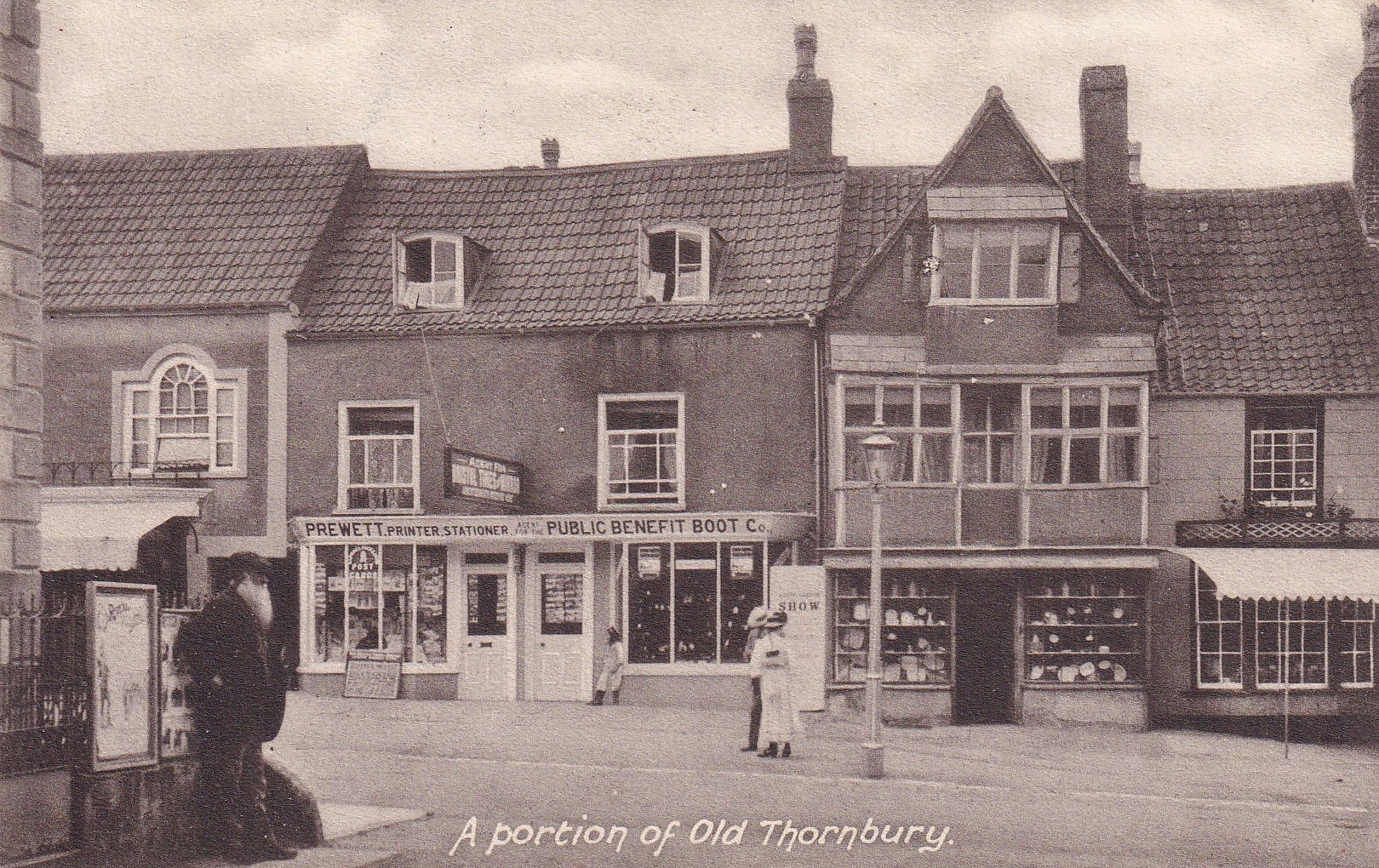
Murray Dowding however was not alone. The collection includes postcards photographed and published by The Cotswold Publishing Co., Ltd., that was based in Wotton-under-Edge some 8 miles from Chipping Sodbury and to a lesser extent Prewett the printers and stationers in Thornbury (see postcard above) some 10 miles from MD's shop.
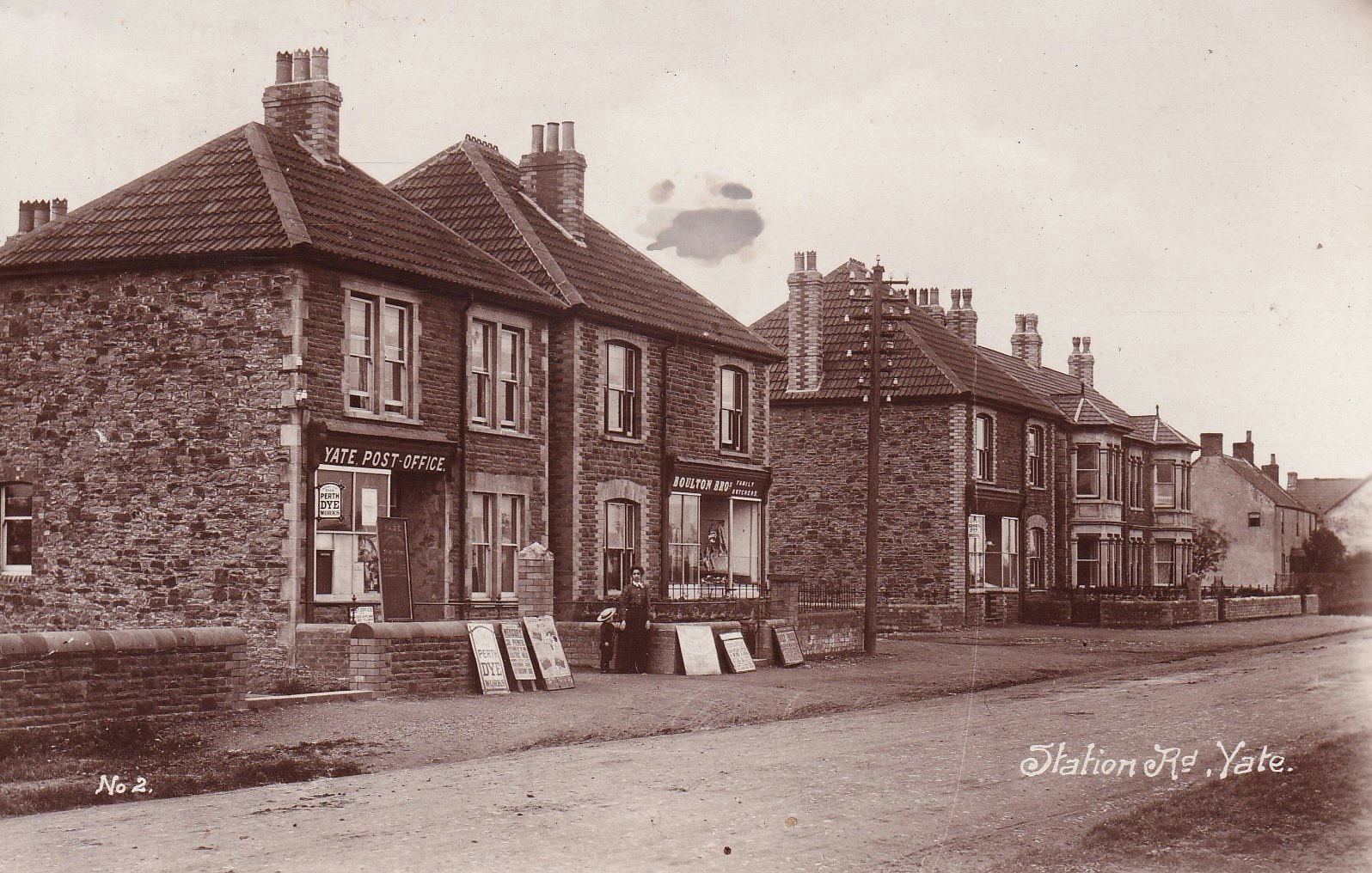
Other notable local producers of cards was A. Chappell of the Post Office in Yate (see postcard of his Post Office on Station Road in Yate above and and an interesting newspaper article clipping below, both from Bob's collection), and E.R. Werrett of Hillsley.
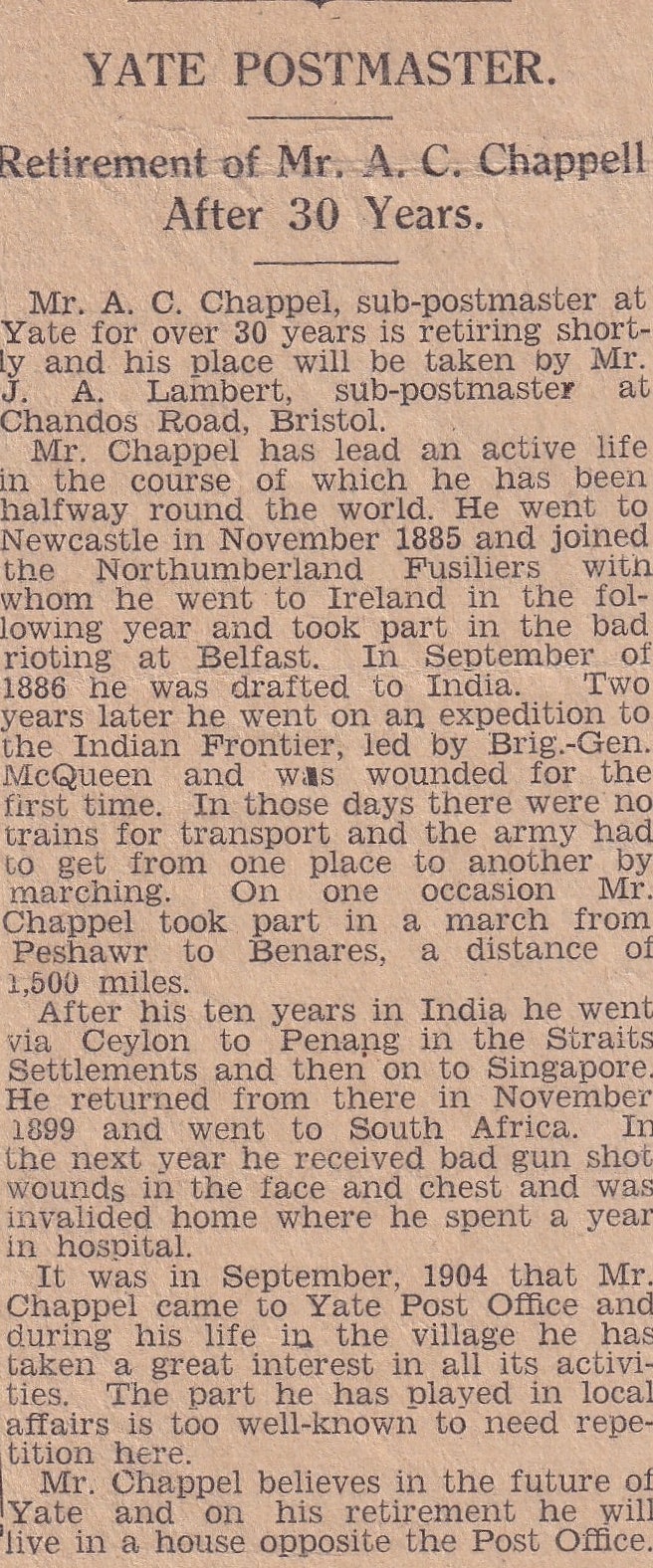
Retirement notice of A. Chappell of the Post Office in Yate who produced and sold postcards
